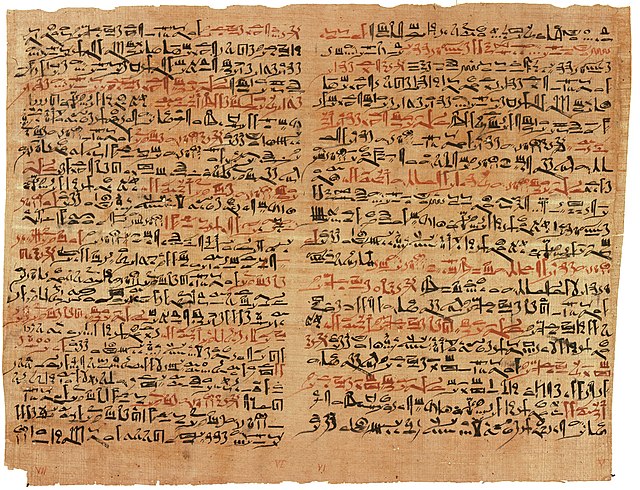Ancient Egyptian medicine
The medicine of the ancient Egyptians is some of the oldest documented. From the beginnings of the civilization in the late fourth millennium BC until the Persian invasion of 525 BC, Egyptian medical practice went largely unchanged and included simple non-invasive surgery, setting of bones, dentistry, and an extensive set of pharmacopoeia. Egyptian medical thought influenced later traditions, including the Greeks.
The Edwin Smith Papyrus documents ancient Egyptian medicine, including the diagnosis and treatment of injuries.
Ebers Papyrus treatment for cancer: recounting a "tumor against the god Xenus", it recommends "do thou nothing there against"
Ancient Egyptian medical instruments depicted in a Ptolemaic period inscription on the Temple of Kom Ombo.
This wood and leather prosthetic toe was used by an amputee to facilitate walking
Ancient Egypt was a civilization of ancient Northeast Africa. It was concentrated along the lower reaches of the Nile River, situated in the place that is now the country Egypt. Ancient Egyptian civilization followed prehistoric Egypt and coalesced around 3100 BC with the political unification of Upper and Lower Egypt under Menes. The history of ancient Egypt unfolded as a series of stable kingdoms interspersed by periods of relative instability known as “Intermediate Periods.” The various kingdoms fall into one of three categories: the Old Kingdom of the Early Bronze Age, the Middle Kingdom of the Middle Bronze Age, or the New Kingdom of the Late Bronze Age.
A typical Naqada II jar decorated with gazelles (Predynastic Period)
Early tomb painting from Nekhen, c. 3500 BC, Naqada, possibly Gerzeh, culture
The Narmer Palette depicts the unification of the Two Lands.
The pyramids of Giza are among the most recognizable symbols of ancient Egyptian civilization.








